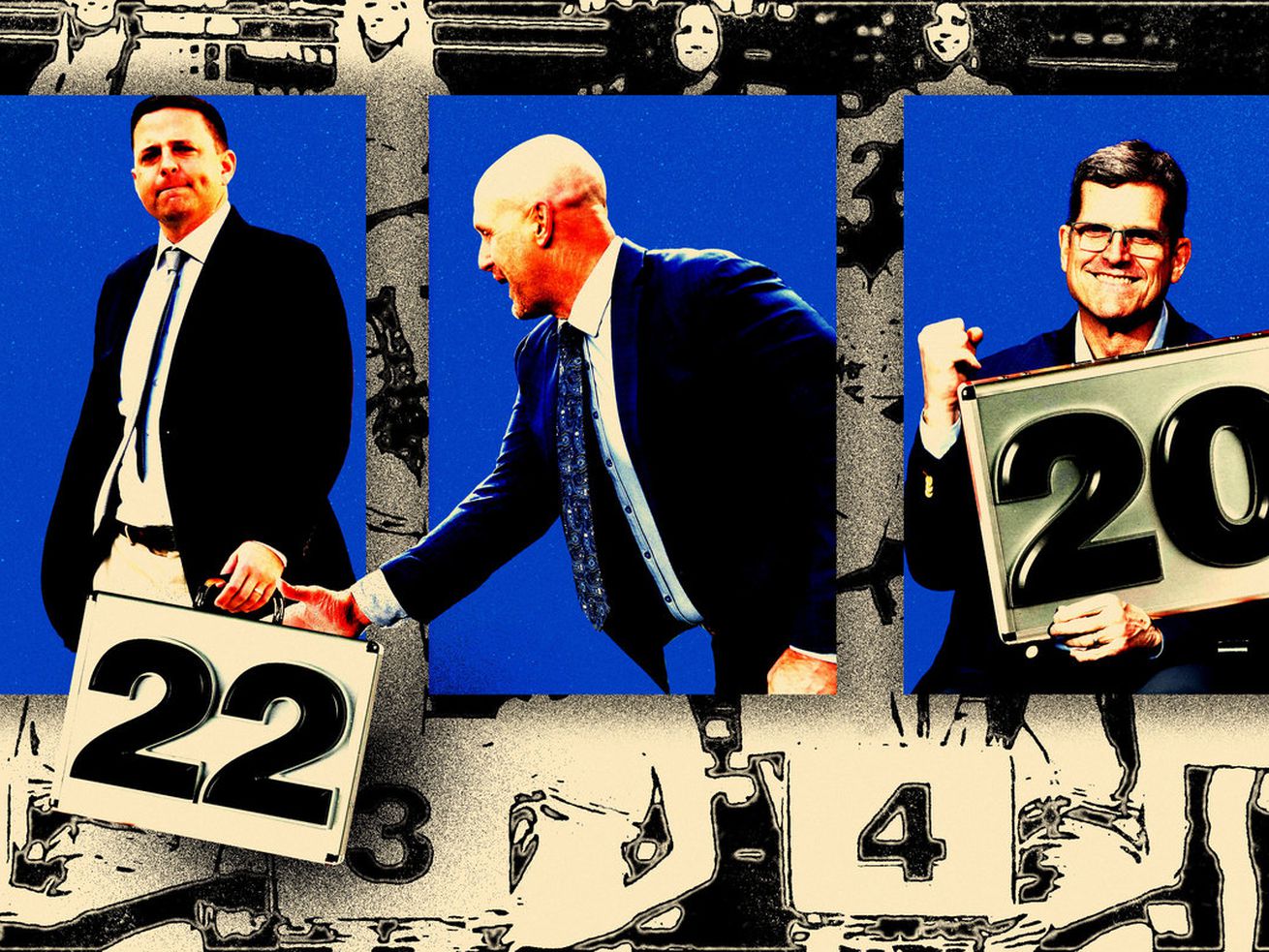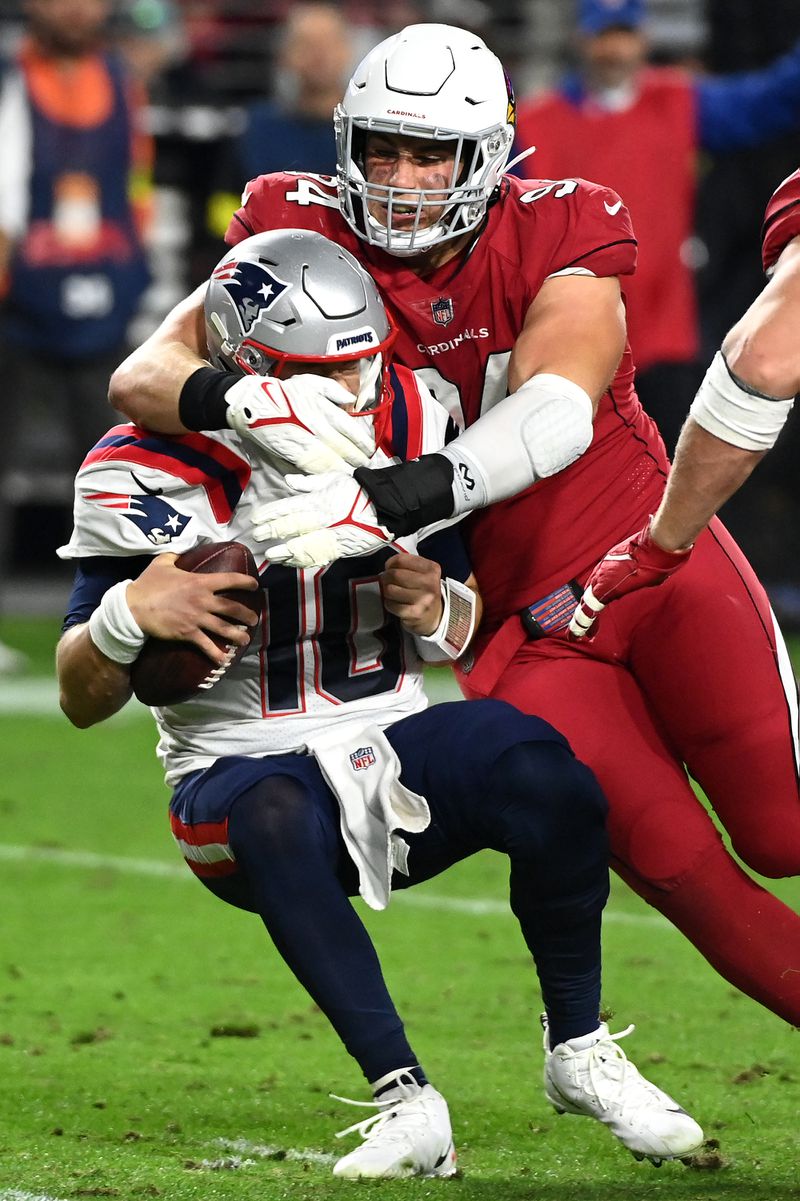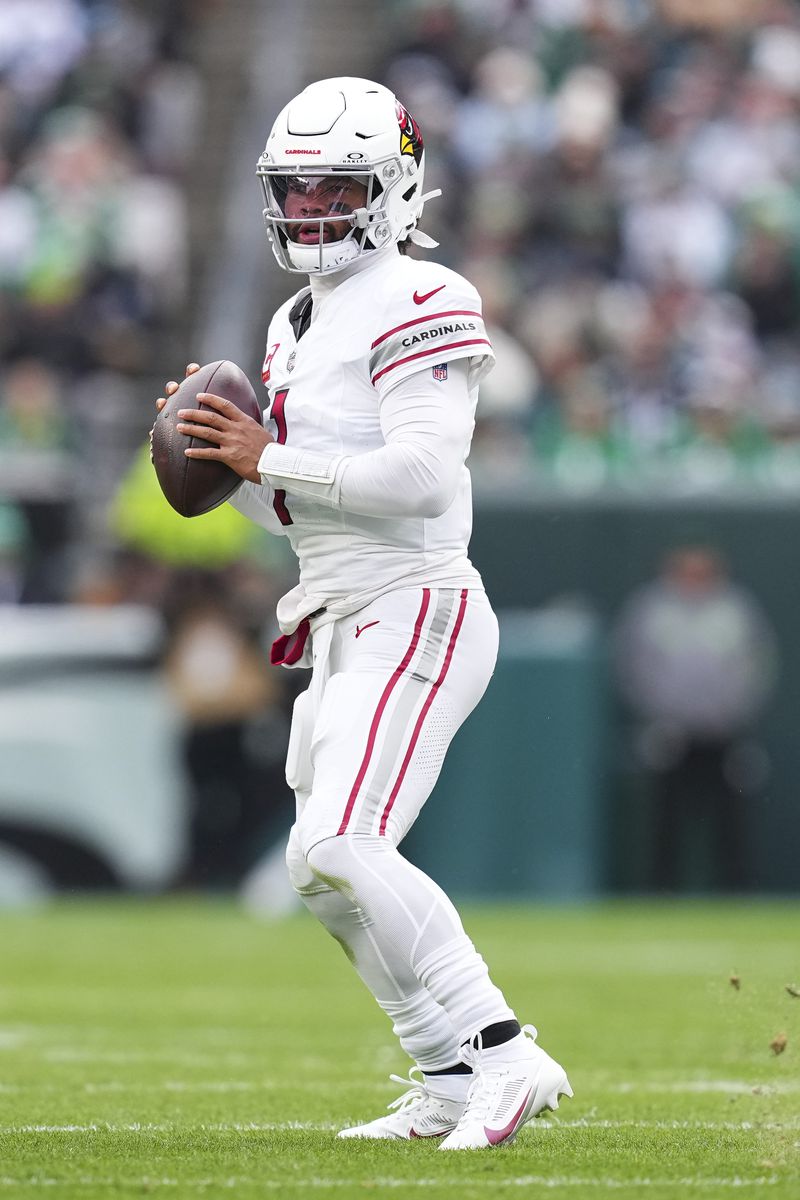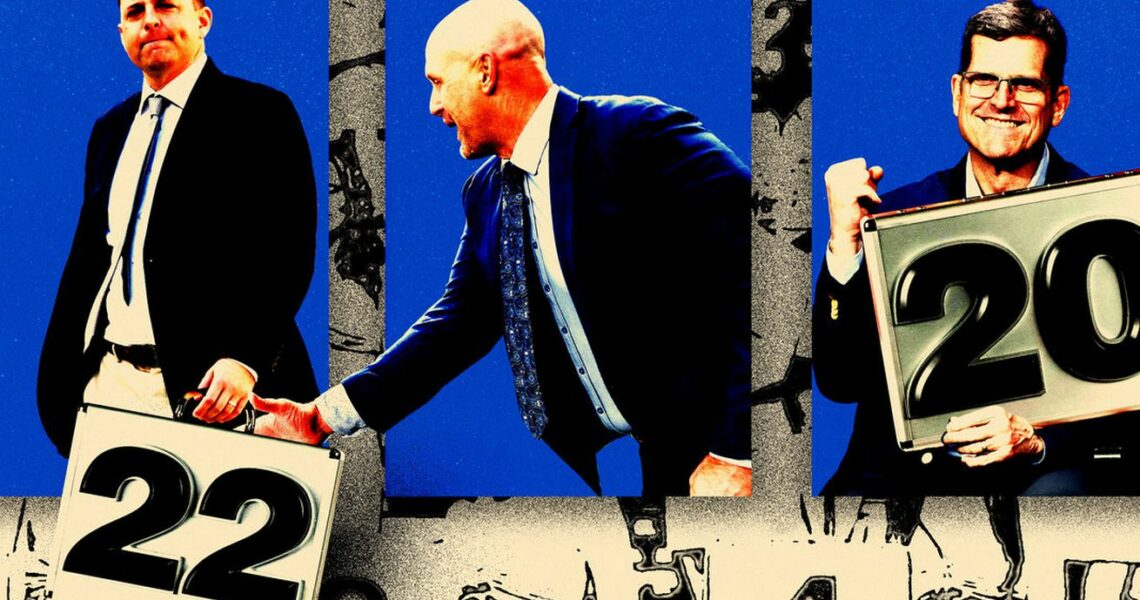
When the first round of the NFL draft kicks off, several teams, including the Patriots, Cardinals, and Chargers, will have big decisions to make. This is what they should do.
Did you know that Deal or No Deal has a spinoff on an island now?
It’s like Survivor, but instead of finding immunity idols, people run around an island looking for giant silver briefcases so they can play Deal or No Deal.
Apologies to the zoomers reading this who have no idea what I am talking about. Deal or No Deal was a game show in the early aughts in which contestants had to choose one of 26 briefcases. They got to keep the money inside the briefcase, but they didn’t know how much money was inside. It could be a million dollars. It could also be a penny. Over the course of the game, the contestant would discover how much was in the other briefcases. The process of elimination gave them a better idea of what might be in their briefcase. As they got a better sense of how much money they might be holding, they would get a call from the show’s “banker” with an offer to buy the briefcase. If you could win up to a million dollars but as little as one cent, would you take an offer of $100,000 in cash?
More than 12 million people watched this show each week. Meghan Markle and Chrissy Teigen got their big breaks by holding these briefcases. It was a weird time.
Anyway, Deal or No Deal is a lot like the NFL draft.
When a team is on the clock, the prospect the team wants is like the briefcase. The team hopes that player is a superstar. But plenty of times it turns out the player is a bust. And while the team is deciding which player to take, it might be getting calls from other teams trying to trade for the pick. The banker calling to buy the briefcase is basically Eagles executive vice president Howie Roseman calling to price check you. (And on the game show and in the draft, everyone is way too confident that they have made a great choice.)
Considering the quality of this year’s draft at foundational positions like quarterback, wide receiver, and offensive tackle, there might be a lot of teams getting calls to trade out of their pick. Let’s go through the teams who are going to be getting a ton of trade calls in this year’s 2024 NFL draft and look at it Deal or No Deal style. What is the banker’s offer going to be? And should they take the deal?
Contestant No. 1: New England Patriots, Pick No. 3
The briefcase: Jayden Daniels, QB, LSU; Drake Maye, QB, UNC; or J.J. McCarthy, QB, Michigan
Chicago is overwhelmingly favored to take USC’s Caleb Williams with the first pick. Washington is expected to draft one of these three quarterbacks with the second pick. So New England will be choosing from whichever two quarterbacks remain on the board out of Daniels, Maye, and McCarthy.
The banker’s offer: Minnesota: No. 11, No. 23, 2025 Third-Rounder
Minnesota has picks no. 11 and no. 23 (acquired in a trade last month with Houston), giving it the most formidable trade package if it chooses to make it. Considering how desperate the Vikings are for a quarterback after Kirk Cousins left in free agency, they are strongly expected to be trying to move up. Deal? Or no deal?

Photo by Norm Hall/Getty Images
The case for a deal: The Patriots offense is about as habitable for a rookie quarterback as Mars is for human life. New England whiffed on signing Calvin Ridley in free agency and settled for longtime Vikings no. 3 receiver K.J. Osborn. After him, New England has a trio of injured returnees: Second-year receiver DeMario Douglas, who had a promising rookie year but suffered two concussions last season; Kendrick Bourne, who will turn 29 in August and tore his ACL just before Halloween; and JuJu Smith-Schuster, who had just 260 yards across 11 games last year and finished the season on injured reserve with an ankle injury (and also had knee issues and a concussion). “Deep” threat Tyquan Thornton finished last season with just 10.1 yards per game, tied for 228th in the NFL with [squints] Jets backup tight end Jeremy Ruckert and Vikings third-string tight end Johnny Mundt. This is the worst skill group in the NFL.
The offensive line is better, but not by much. New England shelled out to re-sign above average right tackle Mike Onwenu. Right guard Sidy Sow was surprisingly competent as a rookie. But New England does not have a starting-caliber left tackle on the roster (31-year-old career backup Conor McDermott is currently atop the depth chart). Left guard Cole Strange was a questionable first-rounder in 2022, had questionable play his first two seasons, and finished the year on injured reserve with a knee injury. Lining up a rookie quarterback behind perhaps the weakest group of blindside protectors in football, and asking him to wait for the worst skill group in the NFL to get open seems like a bad idea. Considering the hits Jayden Daniels took in college, he might get himself killed on this Patriots team.
The Patriots could trade back, take pick no. 11 and no. 23 plus no. 35 and draft a true left tackle plus a receiver or two and build a place hospitable for a quarterback to survive, then figure out who that guy will be later.
The case for no deal: The reason New England would decline the offer is simple: The Patriots need a quarterback! It’s not often you get a top-three pick (hopefully). New England just assuming it will be able to add a quarterback later in this draft is bold. The Patriots are 29-38 and rank 30th in expected points added per dropback since Tom Brady left in 2020. Mac Jones flamed out spectacularly, and has been traded to Jacksonville for a sixth-rounder. Add Drake Maye—or J.J. McCarthy if you believe in Michigan Men reincarnation—and let him ride the bench for a year behind Jacoby Brissett as the offense becomes more palatable for him to survive in 2025.
Verdict: No deal
Contestant No. 2: The Arizona Cardinals, Pick No. 4
The briefcase: Marvin Harrison Jr., WR, Ohio State or QB4
On the board are Marvin Harrison Jr., the best pure player in the draft, and whichever quarterback is still available between Maye, Daniels, and McCarthy. And—surprise!—the Cardinals have two offers to choose from that would allow them to have their cake and eat it too.
The banker’s offer, scenario 1: Minnesota: No. 11, No. 23, 2025 Third-Rounder
If New England turns down Minnesota’s offer for pick no. 3, the Vikings will likely be making a similar offer to Arizona for pick no. 4.
The case for a deal: Arizona has Kyler Murray at quarterback. If the Vikings are willing to part with multiple first-rounders because a quarterback they like is on the board, Arizona would be wise to move. Considering Arizona also has pick no. 27 from Houston, that would give Arizona three first-rounders. In most years, this is a no-brainer.

Photo by Mitchell Leff/Getty Images
The case for no deal: This is not most years.
Harrison is one of the best wide receiver prospects of the 21st century, on par with Larry Fitzgerald when Arizona took him third in 2004. No prospect is a sure thing. But considering his talent, his polish, and that his dad is a literal Hall of Famer, Harrison is about the safest bet you will ever get. And receiver is exactly what the Cardinals need. Arizona lost Marquise Brown in free agency, leaving a glaring hole at no. 1 wide receiver. Arizona with Harrison, second-year receiver Michael Wilson, and the indefatigable slot receiver Greg Dortch plus tight end Trey McBride is a legit group for Murray. The Cardinals already have six of the top 90 picks and 11 in this draft. At this point, adding quality is more important than adding quantity.
The banker’s offer, scenario 2: New York Giants: No. 6, No. 47, 2025 Second-Rounder
In this scenario the Cardinals would drop two spots, from no. 4 to no. 6, and collect the Giants’ next two second-rounders. (I am basing this compensation on the Jets’ 2018 trade with the Colts for the no. 3 pick. New York gave Indianapolis three second-rounders to move up from no. 6.) In this scenario, the Giants could grab the fourth QB off the board to replace Daniel Jones.
The case for a deal: Arizona would still be able to get a bona fide no. 1 wide receiver with the sixth pick, in either LSU’s Malik Nabers or Washington’s Rome Odunze, and would be adding two more second-rounders on top too. And if the Chargers choose to stay at no. 5 and take an offensive lineman, Arizona could still get Harrison anyway.
The case for no deal: Trading out of the chance to get Harrison then watching as he has a better career than his Hall of Fame father would suck.
Verdict: Deal (with the Vikings)
Contestant No. 3: The Los Angeles Chargers, Pick No. 5
The briefcase, scenario 1: J.J. McCarthy
We have to look at two scenarios here for the Chargers. Either Marvin Harrison Jr. or one of the top four quarterbacks is guaranteed to be on the board for the Chargers when they are on the clock at no. 5. Let’s start with the assumption that Arizona has taken Harrison at no. 4.
The banker’s offer, scenario 1: Minnesota: No. 11, No. 23
The case for a deal: If the draft starts with three quarterbacks and Harrison off the board, it would be shocking to see the Chargers sit still when a top-four quarterback is available at no. 5 (and it would be quite the story line for former Michigan coach Jim Harbaugh to dictate where his champion pupil J.J. McCarthy lands).
The Chargers could certainly use a wide receiver after trading Keenan Allen and cutting Mike Williams. But everything Harbaugh has done and said since taking the Chargers job—hell, everything Harbaugh has said and done in his coaching career—suggests he wants to take an offensive lineman with his first pick as Chargers coach. And considering Harbaugh has recruited this generation of college players and has much deeper knowledge on them than most NFL head coaches, it is possible the Chargers will have a different ranking of the O-line prospects than other teams (especially since the Chargers need a right tackle more than a left tackle). And so the Chargers could move down to no. 11 to take Alabama’s JC Latham (who Harbaugh recruited to Michigan), and we could get Harbaugh saying with a straight face that he was the no. 1 lineman on their board.
Even if Latham was gone, the Chargers would be able to still snag another top tackle, from Notre Dame’s Joe Alt, Penn State’s Olu Fashanu, or Washington’s Troy Fautanu. The only way all of those guys would be gone is if one of the receivers—Nabers or Odunze–fell to the Chargers here, which would be quite the snag if they moved down six spots and got one anyway.
The case for no deal: Harbaugh wants a wide receiver and spending his entire offseason talking up the offensive line has been a psy-op. If he hadn’t lived his entire life by his offensive line principles, this idea would be easier to buy into.
Verdict: Deal
The briefcase, scenario 2: Marvin Harrison Jr.
Let’s look at the Chargers’ options again, but this time as if the Cardinals have dealt the fourth pick to Minnesota, and the top four picks are quarterbacks. The Chargers would be picking at no. 5 with Harrison on the board.
The banker’s offer, scenario 2: Arizona: No. 11 and No. 35
The Cardinals in this scenario moved down in a trade with Minnesota, from no. 4 to no. 11, adding Minnesota’s no. 23 pick. The Chargers would get a lesser package from the Cardinals than they would have gotten if a QB were on the board, because teams pay higher prices in draft trades for quarterbacks.
The case for no deal: The Chargers are getting the best player in the draft with the fifth pick. Just take Harrison.
The case for a deal: Where to begin? Jim Harbaugh has spent his entire coaching career:
- evangelizing the offensive line
- evangelizing the University of Michigan
Starting his Chargers tenure by taking a wide receiver from Ohio State feels like heresy. Even if Harbaugh has a special appreciation for Harrison as a player, it feels counter to his football beliefs to be taking a receiver over a lineman this high.
Everybody would win. The Vikings get their quarterback at no. 4. The Cardinals get Harrison and add draft capital. And the Chargers would still snag an offensive lineman at no. 11 and add a high second-rounder in the process.
Verdict: Deal
Contestant No. 4: The Atlanta Falcons, Pick No. 8
The briefcase: Washington WR Rome Odunze and Every Offensive Tackle Except Notre Dame’s Joe Alt
The Falcons are likely looking at a scenario in which the teams ahead of them have drafted the top four quarterbacks, the top two receivers, and the top left tackle (in this case, Joe Alt). That means Atlanta still has one of the Big Three receivers and literally every defender left to choose from.
The banker’s offer: Denver: No. 12 and 2025 Second-Rounder
Consider Denver here a placeholder, as the Falcons will likely take calls from a ridiculous array of teams. The Saints and the Jets could also be on the phone trying to move up to cut the line for some of the guys on the board at no. 8. They might be calling to snag Odunze. Or maybe they’re calling to take an offensive tackle.
The case for a deal: The Falcons have invested about as much on offense as any team in the NFL. They have a first-round running back in Bijan Robinson, a first-round receiver in Drake London, and a first-round tight end in Kyle Pitts (all picked in the top 8). They also have three first-rounders on the offensive line, plus a second-rounder too. They gave Kirk Cousins $45 million per year at quarterback. Hell, they gave Darnell Mooney more than $13 million per year at receiver. The Falcons don’t need more offense. But this is an offense-heavy draft. There is a serious chance—perhaps more likely than not—no defenders will be taken before Atlanta goes on the clock. And considering the Bears have the next pick at no. 9 and may want to surround Caleb Williams with talent, and the Jets at no. 10 have receiver and O-line as their biggest needs, Atlanta could scoot back to no. 11 and possibly still get its top-rated defensive prospect while picking up some additional capital.
The case for no deal: Atlanta’s new head coach, Raheem Morris, is a defensive coach. It’s too big a risk to assume the top-rated defensive player, in Morris’s first draft in charge, would still be there later if the team were to move back.
Verdict: No deal.

